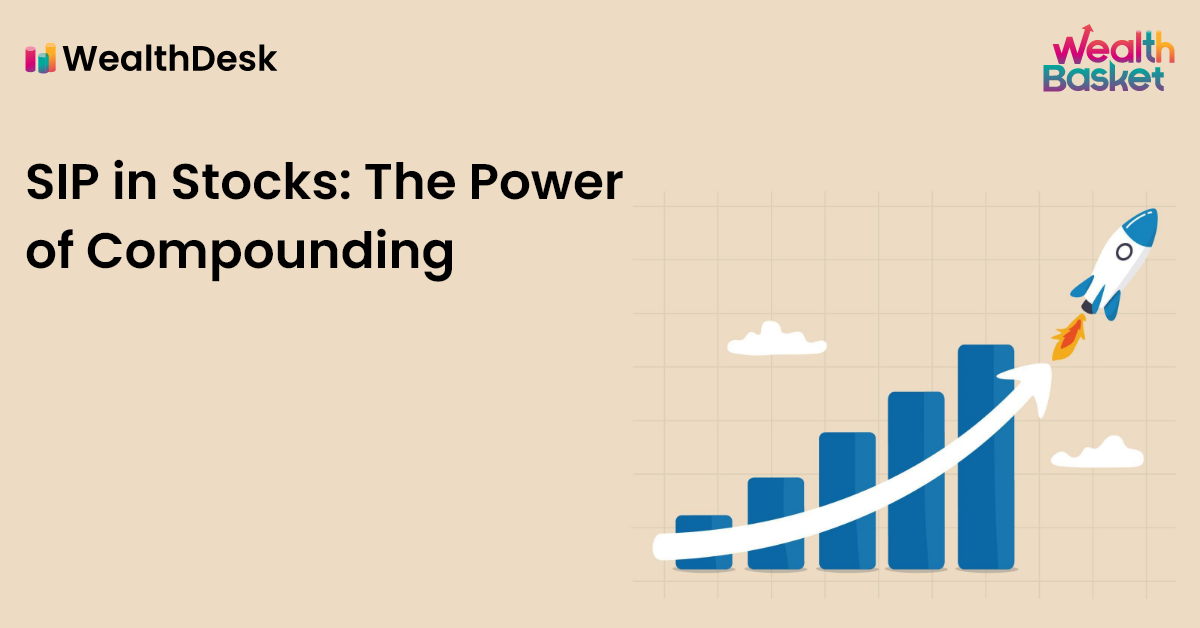Making wrong investment decisions is very easy. However, wrong decisions are even easier to make when the value of securities is unclear. This lack of clarity is a major feature of volatile markets. Thus, volatile markets make everyone’s life harder. They are infamous for inducing panic and creating uncertainty about asset values. Therefore, it is wise to look at the strategies that help you survive in volatile markets.
Volatile Markets
Volatility, in simple terms, refers to the movement in value of a particular index (Nifty 50, SENSEX) or security (stocks, debt, commodities, etc.).Typically when we hear about a rise in market volatility, an index of the market has fluctuated a lot in a short period.
For example, we would say there’s high volatility in NSE if NIFTY fluctuates a lot in a short period.
NSE has a volatility index called India VIX or NIFTY VIX. It tracks the expected volatility for the next 30 calendar days. Hence, a rise in NIFTY VIX would indicate a rise in volatility.
A market-wide rise in volatility means a lack of safe investment options. Volatile markets are panic-inducing, create uncertainty and are sadly inevitable. They are characterised by wide price fluctuations and high trading volumes.
Volatile markets are problematic because it is challenging to know the value of any security.
Investors find that their temperament is tested more than their intelligence. So while dodging panic trades and resolving to take some losses and move on is the correct answer, the actual process that leads to it is hard to find.
Buy the dip
Buying the dip is something you’ll hear from almost every YouTube finance influencer claiming to do in a crisis. It is an attractive idea too. Buy at the lowest of lows, and you are always making a profit. It makes mathematical sense as well! There are many dips to buy and many peaks to sell in a volatile market. So an investor’s urge to try and ‘time the market highs and lows’ is understandable. But, as we will see, it is a very risky strategy.
Examples:
Suppose on 29th November, we bought Spicejet shares for ₹ 70.75.
This looked like a dip from the previous week when the price was in the 80s or high 70s. We hoped to make profits when Spicejet recovers.
If Spicejet had recovered to ₹ 80, we would have made ₹ 7.25 for every share we bought. In other words, a profit of 10.247%.
However, Spicejet has been falling since we bought it and currently (20/12/2021) stands at ₹ 63.50. So for this trade, we lose ₹ 7.25 per share. In other words, a loss of 10.247%.
Problems with ‘buying the dip’?
There are two major problems with ‘buying the dip’:
1. It is simply not possible to time the market.
In the words of Peter Lynch, “The only problem with market timing is getting the timing right.”
Experienced investors think of timing the market, i.e. predicting the timing of a market’s rise and fall, as foolish.
The first step in ‘buying the dip’ would be to recognise the dip. A dip would be a low point where one expects the security price to rise. With proper research and enough time, it may be possible to determine the actual value. In theory, any value below that would be an opportunity to buy.
But, in any market conditions, it is difficult to find the actual value of a company. So even in normal circumstances, recognising a dip is challenging. Moreover even, even if you could identify a dip, another issue you run into is timing your trade. Speculative behaviour makes this task even more challenging.
And so far, we haven’t even gotten to the problem of ‘buying the dip’ in volatile markets.
Finding the value of securities when changes in government policies (Repo Rate, spending, budget, etc.) or company policies happen is even more difficult.
The difference between correlation and causation becomes even more blurred in volatile markets. What do we mean by this?
Ans.:
Just because leaves fall when trees die doesn’t mean you’ll think fallen leaves equal the death of trees. Sometimes it’s just autumn.
Volatile markets make it difficult to tell which is which. Is it autumn, is the tree dying, or did some kid shake the tree really hard? Hard to tell. Too much fog.
2. It’s an idea, not a strategy
There’s another vital flaw in this plan. It’s not a plan; it’s just a goal.
How can you win a football game? Just score 10 times whatever your opponent scores.
It might feel attractive, but it’s just an exaggerated goal. You might get lucky sometimes but finding ways to buy the dip in volatile markets is next to impossible.
Buying the dip is a problematic first step. As a rule: you can’t make a good plan if the first step of your plan is next to impossible.
Buying the dip is a highly criticised strategy if one can call it that. Experienced stock market professionals can fail at buying the dip despite their resources and brainpower.
Discover stocks that suit certain filter criteria and dive into details to check their WealthBaskets.
SIPs
SIPs have been heavily marketed as a way to invest in mutual funds. But investors could use them to invest in any asset: stocks, mutual funds, ETFs, bonds, etc.
After all, SIPs are just a way to plan your investments. Instead of making lumpsum investments, you just invest periodically. It could be weekly, monthly or quarterly.
The investment amount remains the same for all instalments.
For example:
SIP: Vodafone Idea | ₹ 10,000 | MONTHLY
| Date | Close (₹) | Shares bought | Instalment (₹) |
| 1/06/2021 | 8.5 | 1176 | 9996 |
| 1/07/2021 | 9.05 | 1105 | 10000.25 |
| 2/08/2021 | 8.25 | 1212 | 9999 |
| 1/09/2021 | 6.1 | 1639 | 9997.9 |
| 1/10/2021 | 11.4 | 877 | 9997.8 |
| 1/11/2021 | 10.1 | 990 | 9999 |
| 1/12/2021 | 12.8 | 781 | 9996.8 |
Total investments =₹ 69,986.75
Average buying price of shares ≈ ₹ 9
Shares bought = 7780
Value of investment on December 1st = ₹ 99,584
In the example above, we can see that we have bought more shares at low prices. And, when the prices were high, we bought fewer shares.
SIPs in Volatile Market
Following are some of the benefits of SIPs in volatile markets:
- Rupee cost averaging
By making your investments over time, you get the chance to buy more at the lows. At higher prices, you restrain yourself by buying less. This happens on its own in SIPs because the investment amount is fixed. This cost-reducing effect is called the Rupee cost averaging. So, whatever investment you make, there’s a decent chance that it’ll cost less through SIPs than in one-time investments. The investment cost us less as we targeted lower prices through a SIP.
- Compounding benefits
In the case of growth SIPs, the returns you get (for example, dividends for stocks, interest for bonds etc.) are reinvested back into the asset. This means that your returns will now grow along with your previous instalments. So in every period, your instalments join your previously invested money and the returns you have previously received on them. These returns then grow along with the principal investment and subsequent investments over the period. So growth plans have this snowball effect that we call compounding benefits.
- Promotes discipline and consistency
SIPs help invest in a consistent and disciplined manner, regardless of market conditions. Investors can build wealth by investing long-term and surviving through volatile markets. SIPs can help investors, provided they have a long-term holding period.
Conclusion
Thus we see that SIPs would be the better strategy in volatile markets. Investing is complex. And it can be challenging in volatile markets. The key is to aim for long-term wealth rather than one-time bets that may cost you dearly.
We hope this blog helped you gain an insight into
investing in volatile markets. Feel free to contact us
if you have any questions. Bookmark
https://wealthdesk.in/blog/
for such content.
WealthDesk is a platform for
everyday investors to invest in portfolios created and
managed by SEBI registered professionals. Check out the
WealthBaskets
made by SEBI registered investment advisors.
FAQs
Volatile markets are tricky even for experienced investors. But, ways to make money still exist. SIPs are one of the methods that beginners can use and learn more about the markets. In addition, investors with access to considerable funds and experience may hedge through derivatives. However, effectively using derivatives requires a deep understanding of the derivatives market and a risk appetite.
Volatility indices may give an investor a decent
idea about the expected volatility.
In India,
India VIX or NIFTY VIX is an index that reflects the
expected market volatility over the next 30 calendar
days.
High volatility assets are seen as risky assets. For example, suppose the value of a stock keeps fluctuating. The market value of the company too will fluctuate. These fluctuations may affect their credit ratings, loan interests, and many such expenses. It might become hard to tell whether they will stay profitable or not. So we see that volatility raises questions of the company’s future and hence scares investors.


















